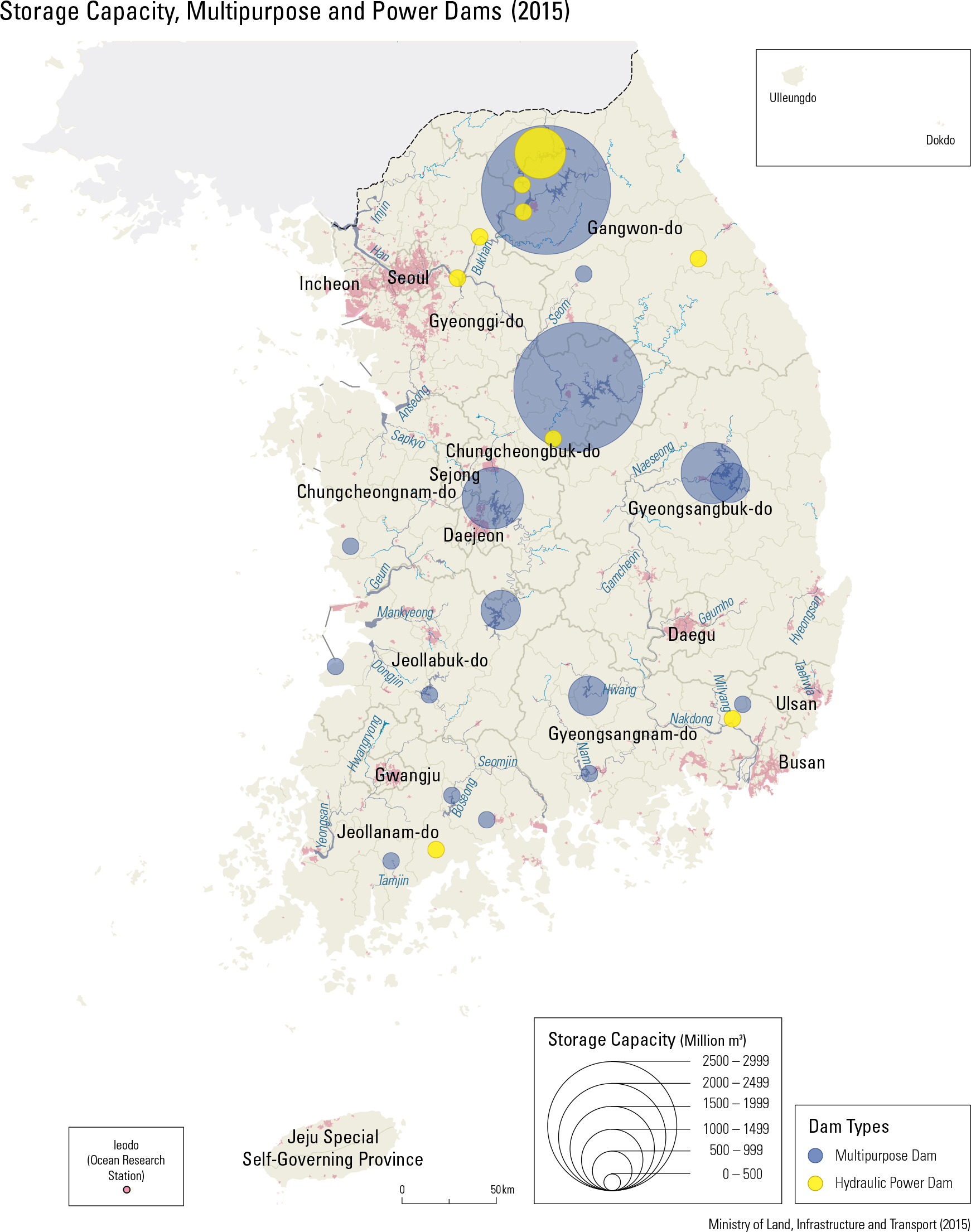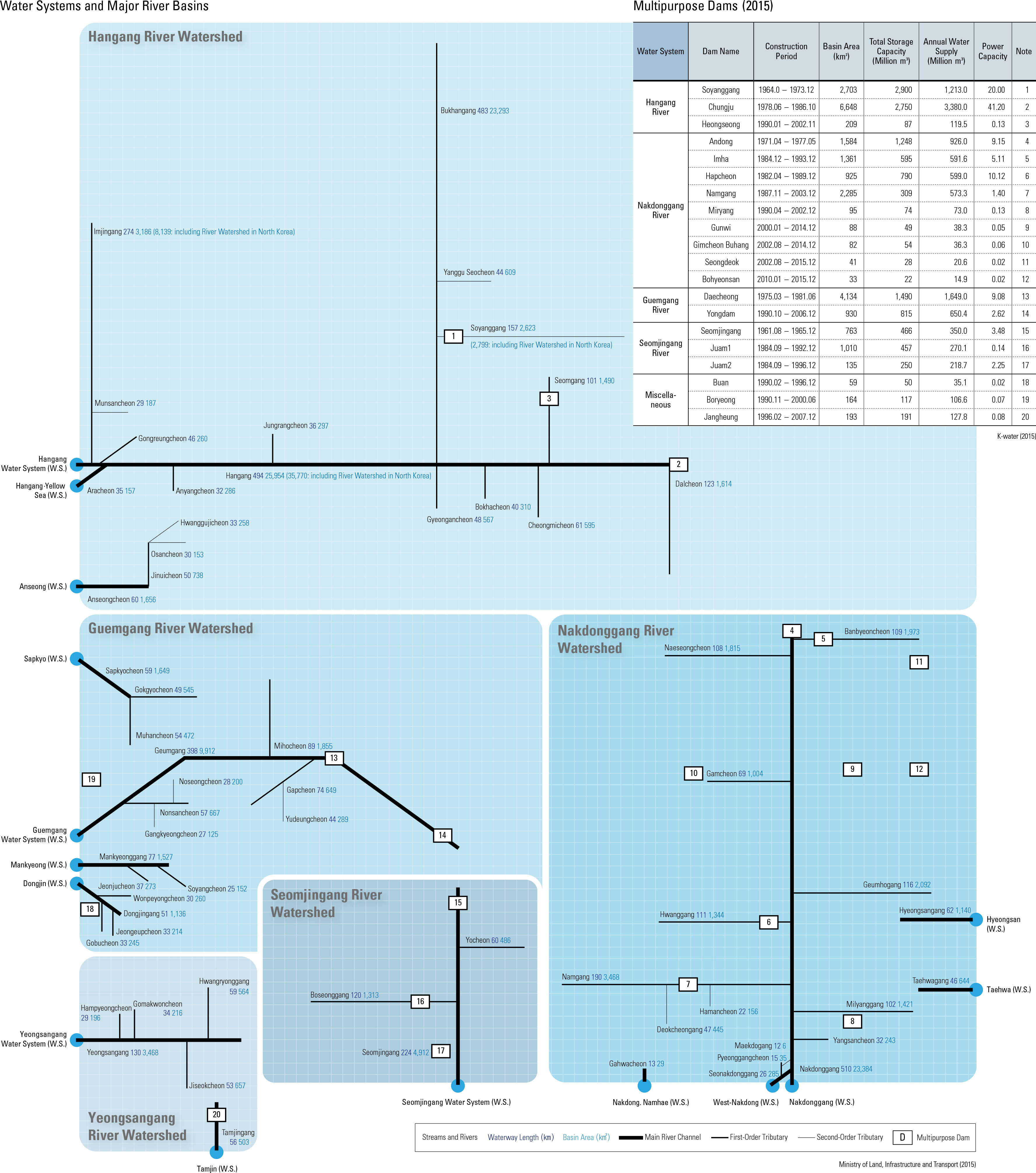English III
Water resources have always been important in Korea because of its long history of agriculture, and have remained an essential element for in- dustrialization and urbanization during the 20th century. Industrialization progressed along rivers that had plenty of water, such as the Hangang and the Nakdonggang. According to the National Long-Term Water Resources Plan (2011 – 2020), the total amount of water resources in South Ko- rea (including inflow from North Korea of 2.3 billion m3) is 129.7 billion m3. Of that amount, 75.3 billion m3 are usable after losses from evapo- ration and other factors. Due to seasonal variation in precipitation, about 56.0 billion m3 (43%) are gained during the heavy rainfall season (June to August), and about 19.3 billion m3 (15%) are gained during the other seasons. After accounting for the amount discharged into the seas, 33.3 billion m3 are available for use in streams, dams, and groundwater. Dams account for 18.8 billion m3 (56.5%) of the total amount of water use, while streams account for 10.8 billion m3 (32.4%) and groundwater accounts for 3.7 bil- lion m3 (11%). Dams built to store water are common in Ko- rea because of seasonal changes in precipitation. Dams may be categorized based on the purpose of water use: irrigation dams for farming, drinking water dams for living and industries, hydraulic power dams for electricity generation, estuary banks for water preservation and ood prevention, balancing reservoir dams for water level contro from abrupt dam ef uent, and multipurpose dams. In Korea, many multipurpose dams have been built since the passage of the Speci c Multi-Pur- pose Dams Act (April 23rd, 1966). Even though the Seomjingang Dam (built in 1965) and the Namgang Dam (built in 1971) are multipurpose dams, their projects started before the Act was enacted. The Soyanggang Dam (constructed April 1967 – October 1973) is the first multipurpose dam that was built after the legislation went into effect. Later, the Act was merged with the Dam Construction and its Surrounding Area Support Act in 1999 in order to manage water resources systematically and uniformly. There are 17,656 dams in South Korea. Among them, 20 are multipurpose dams, 55 are living-in- dustrial dams, 12 are electrical dams, and 17,569 are agricultural dams. The multipurpose dams account for 68.3% of the total reservoir capacity. The Hangang and the Nakdonggang watersheds hold large amounts of available water resources. According to the K-water (Korean Water Service Company) survey in 2015, the Soyanggang Dam in the Hangang drainage system has the largest reservoir capacity at 2.9 billion m3. The second is the Chungju Dam (Hangang drainage system) at 2.75 billion m3, the third is the Daechung Dam (Geumgang drainage system) at 1.49 billion m3, and the fourth is the Andong Dam (Nakdonggang drainage system) at 1.248 billion m3.
page_2 |



